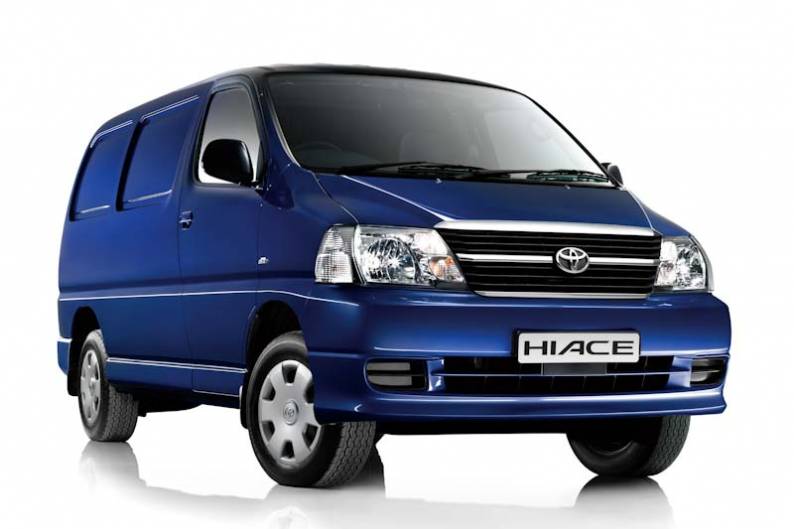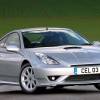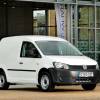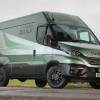
RAC sale – up to 33% off*
• Roadside cover from £5.29 a month†
• We get to most breakdowns in 60 mins or less
• Our patrols fix 4/5 breakdowns on the spot

By Andy Enright
Introduction
Given that most light commercial vehicles are built to a template when it comes to size and indeed pricing, there has to be something that differentiates them. Why is one successful where another one falls by the wayside? To get an insight into the solution to that question, one need only look at Toyota's massively successful Hiace, the biggest selling van of its type around the world. The attribute that's shifting so many of these vans? Reliability. Simple, honest to goodness reliability. The Hiace isn't the best looking van you can buy nor is it necessarily the best equipped, but for people who just cannot afford down days when their commercial vehicle goes lame, the Toyota Hiace has become the prime pick. Here's what to look for when buying used.
Models
Light commercial vehicle (2.5 diesel [280 SWB, 300 LWB])
History
Though Toyota has been importing LCVs to these shores since 1972, its range of light commercials has traditionally been limited to the Hilux pick-up and this Hiace van, launched in the fifth generation form we're looking at here back in 2004 and facelifted in 2009. It's a van that has always had to play second fiddle in the UK to European-built tackle such as the Ford Transit and the Renault Trafic, but it nevertheless offers something a little different.
What You Get
This isn't the prettiest or the most stylish van you're likely to come across, but then aesthetics don't tend to figure too highly on the wishlists of most LCV buyers. Toyota tried to smarten things up with a revised front grille in 2009 in a not especially convincing attempt to embolden the look of the front end. Still, it remains a neat, if not especially memorable design, though we'd like to have seen side rubbing strips provided along the flanks to protect against everyday scrapes and dents. Flip open the bonnet and you'll find that this Hiace boasts not one but two batteries, a useful feature given the drain on battery power imposed by some of the equipment operators use in their vans these days and the need for LCVs to start first time, every time whatever the conditions.
Choosing a Hiace could hardly be simpler. The range starts with the '280 SWB', Toyota-speak for 'short wheelbase with a 2800kg gross vehicle weight'. This entry-level variant comes only with the lower-powered 94bhp D-4D diesel engine, badged 'D-4D 95'. The alternative is the '300 LWB', or in other words, 'long wheelbase with a 3000kg gross vehicle weight'. This model was offered with the 95bhp engine or the more powerful 115bhp D-4D diesel, badged 'D-4D 120'.
Whichever variant you choose, standard equipment levels are good. All late model Hiace variants include air conditioning, power windows, electric heated mirrors, remote central locking, an MP3-compatible CD stereo, a height-adjustable driver's seat, a full-height glazed bulkhead and a sliding side door. Safety provision though, is limited to ABS braking and a driver's airbag. Retaining the 'keep it simple' approach, apart from usual items like front foglamps, a roofrack and a tow bar, there were only three real accessory options offered to original buyers of late model Hiace vans. The 'Professional Pack' included Bluetooth 'phone compatibility and rear parking sensors while the 'Metallic Package' ran to metallic paint, colour-coded bumpers and full wheel trims. That only left the last option of a full load area ply-lining kit. Check out in any given used example which of these the original buyer chose.
What You Pay
Please fill in the form here for an exact up-to-date information.
What to Look For
Random fact of the day. In Japan's famously law-abiding society, the most stolen vehicle is the Hiace. The reason why? It took Toyota a long time to cotton onto the fact that vans needed sophisticated alarms and immobilisers as well, and stolen Hiaces found a ready export market to, yes, you guessed it, the UK. An aftermarket alarm might well be a sound investment. Another thing to look out for is that your Hiace really is just as it seems. In 2009, Chinese company Higer launched its KLQ6540 model, and if imitation is the sincerest form of flattery, the Hiace ought to be blushing. In its domestic market, it was a third of the price of a Hiace. You'd probably want to see its crash test results before buying one.
Real Hiaces are, unsurprisingly, almost bulletproof. The D-4D engines are under-stressed and over-engineered, the bodies are well rust-proofed and the interiors are hardwearing. Look for corrosion around lashing points and listen for blowing exhausts. Front light clusters can suffer from condensation ingress.
Replacement Parts
(approx based on an 20011 Hiace 280 SWB) The Hiace doesn't go wrong very often and even if it does, the parts are cheapish. You'll pay £140 for starter motor and £150 for a refurbished alternator. A clutch assembly kit is £220 while a headlamp unit is £215. Front brake pads are £45 a set.
On the Road
Slip behind the wheel of this Hiace and you'll be pleasantly surprised by how car-like its driving is, compared to most rivals thanks to a rather un-van-like vertically-mounted steering wheel. Once you've tilt-adjusted it and ratcheted the height-adjustable seat up or down, it's easy to find a comfortable driving position, aided by thoughtful touches like a driver's armrest and window glass chosen to reduce UV glare.
Neither of the engines are especially silent, so it's just as well that in other areas, Toyota's designers have worked hard to prioritise refinement, fitting a full-height glazed bulkhead as standard and using sound-absorbent material liberally around the cabin to significantly reduce noise, vibration and harshness. On the handling front, there are more rewarding vans in this sector to drive - the lightness of the power steering makes it difficult to judge the limits of grip when powering through tight bends. Still, for the same reason, it's also true to say that more importantly, there are few vans of this size that are easier to twirl about urban streets. Here, you'll appreciate a turning circle measured at 5.5m in the shorter version and 6.2m if you go for the longer variant.
Overall
The Toyota Hiace might not be the first vehicle you turn to when choosing a light van but if you value sheer reliability and unflashy utility, it's very hard to beat. Both engines are honest units that make up for their slight lack of refinement in absolute unburstability. If you're honest and examine the reasons why you need an LCV, it won't come as any great surprise to you to discover how the Hiace conquered the world.







